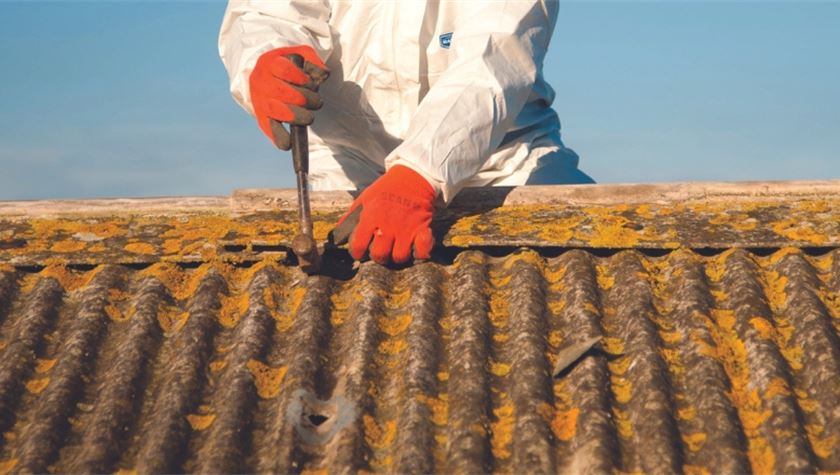Materials that May Contain Asbestos
In this post, Ed Kennedy (founder of Haztrainer) will share some common materials used in society that may contain asbestos. Our goal here at Haztrainer is to keep you safe and informed!
Why Should You Care About Asbestos Presence?
Before discussing commonly used materials that may contain asbestos, it’s important to touch on why ascertaining the presence of asbestos matters.
Asbestos is a proven hazard largely when it breaks down. When intact, asbestos doesn’t pose any risk. However, when disturbed, it breaks down easily and releases microscopic fibers that are easily inhaled. What’s more, the fibers can remain airborne days after they were initially disturbed.
The size of the fibers also makes them capable of traveling to the deepest parts of the lungs, where they lodge into lung tissues. Once in place, the fibers cause serious diseases like asbestosis (scarring lung tissue), lung cancer, and mesothelioma (a unique type of cancer that attacks the lining cavity in the lungs).
Knowing which items have asbestos is therefore critical for avoiding deadly diseases. Considering you can’t even see asbestos fibers suspended in the air or experience an immediate, distinct symptom when you inhale asbestos, precaution is the best cure. Knowing the items that contain asbestos and avoiding contact with them completely is the best defense. So, what are the commonly used materials that may contain asbestos?
Commonly Used Materials with Asbestos
I. Roofing: Houses built before the world started banning asbestos-containing materials are likely to contain asbestos roofing. Over 60 countries today have banned asbestos use. However, this hasn’t always been the case. Before asbestos started being banned (before the 1980s), most homes had roofs containing asbestos. If your home was constructed in that era and the roofing has never been changed, chances are the roof has asbestos.
II. Piping: Piping insulation in old homes constructed before the 1980s is also likely to contain asbestos. This is the case as asbestos is a great insulator. Most hot water pipes in old homes are likely to contain asbestos.
III. Floor tiles, Textiles & Composites: Old cement floor tiles and textiles common in fuse boxes in old homes also contain asbestos. For decades, asbestos-containing paper was used as lining under tiles. The same applies to window sills, bath panels, and toilet cisterns largely in old homes.
IV. Other commonly used materials that may contain asbestos include; insulation boards, textured coating, roofing felt, gaskets and rope seals.
How Do I Know Something Contains Asbestos?
It all starts with suspected cases. If the item in question is discussed above and happens to be in an old home built before the 1980s asbestos ban, that material may contain asbestos. Generally, asbestos is common in old construction materials, and the best way of knowing if something has asbestos is to test it.
However, you need special OSHA-approved training to handle and test asbestos-containing materials safely. This explains why workers working in industries like construction and general assembly must take asbestos awareness training.
Where Can I Get Asbestos Awareness Training Online?
Asbestos awareness and abatement training is readily available online today at Haztrainer. You can get trained on asbestos and lead awareness to satisfy the legal requirements for working in areas or with materials suspected of containing asbestos, among other harmful materials like lead.
Haztrainer Asbestos training courses are quick, OSHA-approved, and convenient. The training also meets the EPA’s and AHERA’s strict requirements. What’s more, training is by a certified instructor, and there are numerous learning resources from video clips to easy Q/A selections and group training.

Recent Comments